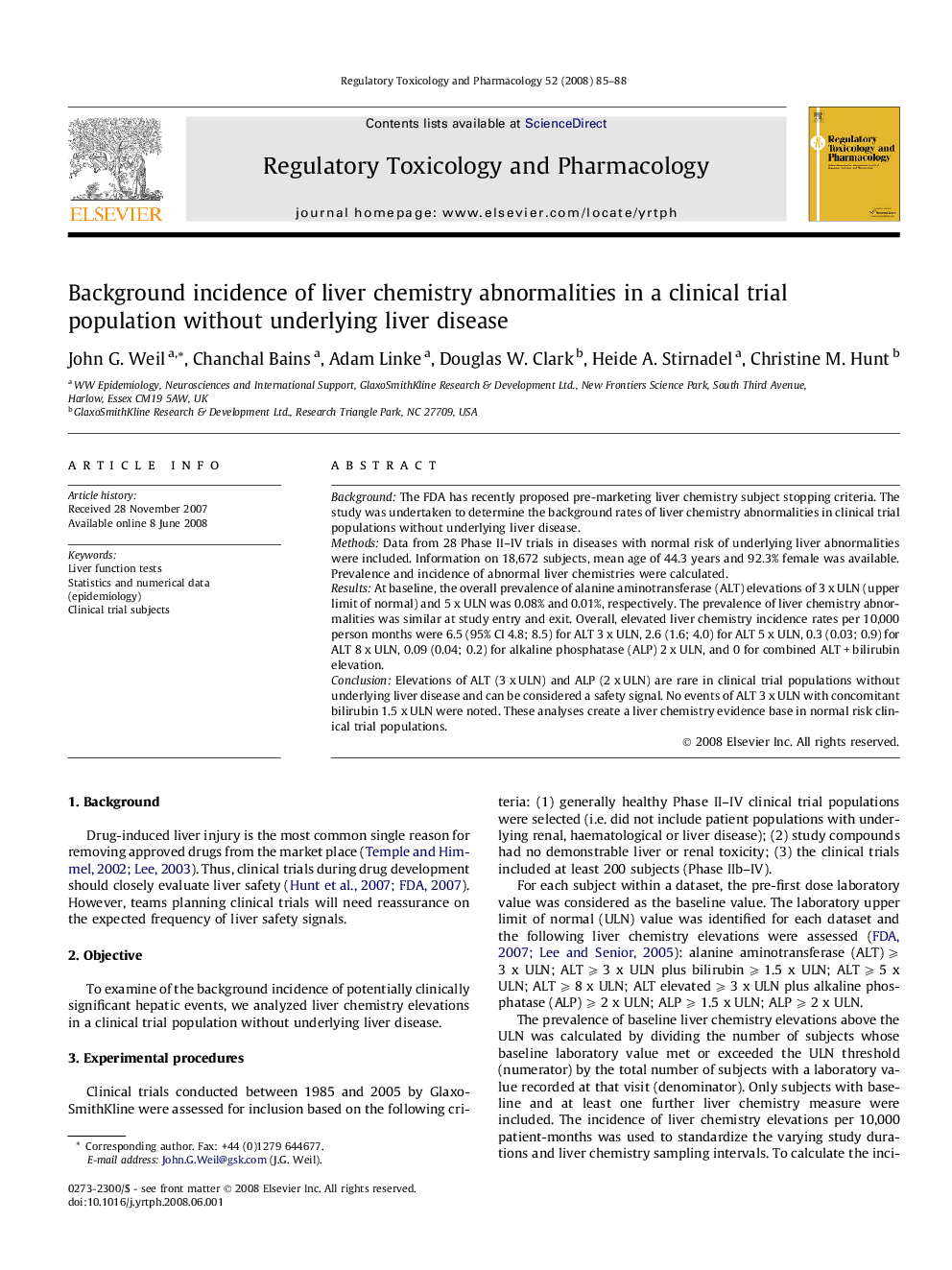| Article ID | Journal | Published Year | Pages | File Type |
|---|---|---|---|---|
| 2592630 | Regulatory Toxicology and Pharmacology | 2008 | 4 Pages |
BackgroundThe FDA has recently proposed pre-marketing liver chemistry subject stopping criteria. The study was undertaken to determine the background rates of liver chemistry abnormalities in clinical trial populations without underlying liver disease.MethodsData from 28 Phase II–IV trials in diseases with normal risk of underlying liver abnormalities were included. Information on 18,672 subjects, mean age of 44.3 years and 92.3% female was available. Prevalence and incidence of abnormal liver chemistries were calculated.ResultsAt baseline, the overall prevalence of alanine aminotransferase (ALT) elevations of 3 x ULN (upper limit of normal) and 5 x ULN was 0.08% and 0.01%, respectively. The prevalence of liver chemistry abnormalities was similar at study entry and exit. Overall, elevated liver chemistry incidence rates per 10,000 person months were 6.5 (95% CI 4.8; 8.5) for ALT 3 x ULN, 2.6 (1.6; 4.0) for ALT 5 x ULN, 0.3 (0.03; 0.9) for ALT 8 x ULN, 0.09 (0.04; 0.2) for alkaline phosphatase (ALP) 2 x ULN, and 0 for combined ALT + bilirubin elevation.ConclusionElevations of ALT (3 x ULN) and ALP (2 x ULN) are rare in clinical trial populations without underlying liver disease and can be considered a safety signal. No events of ALT 3 x ULN with concomitant bilirubin 1.5 x ULN were noted. These analyses create a liver chemistry evidence base in normal risk clinical trial populations.
